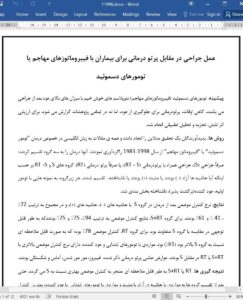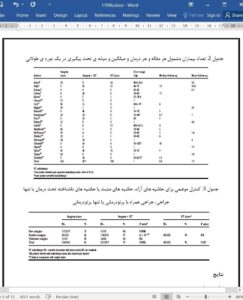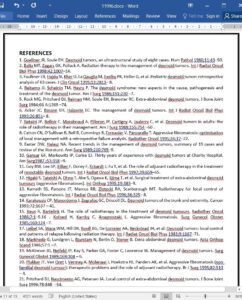BACKGROUND. Desmoid tumors (aggressive fibromatoses) are benign neoplasms with high rates of recurrence after surgery. Radiotherapy is sometimes reported to prevent recurrences, but not in all studies. In order to evaluate the effect of radiation, comparative analysis was performed.
METHODS. The authors conducted a MEDLINE search and collected all articles in the English language on the treatment of “desmoid tumor” or “aggressive fibromatosis” from the years 1983–1998. They categorized treatment into three groups: surgery alone (S), surgery with radiotherapy (S 1 RT), or radiotherapy alone (RT). The S and S 1 RT groups were each subdivided according to whether margins were free (2), positive (1), or unknown. Each subgroup was divided into cases with primary, recurrent, or unknown tumor.
RESULTS. The local control rates after treatment for cases in the S group with (2) margins, (1) margins, and overall were 72%, 41%, and 61%, respectively. For the S 1 RT group the local control results were 94%, 75%, and 75%, respectively, significantly different when compared with the results for the S group. For the RT group, the local control was 78%, significantly superior to that of the S group (61%). Cases with primary and recurrent tumors had significantly superior local control rates with S 1 RT or RT versus S. Radiotherapy complications noted were fibrosis, paresthesias, edema, and fracture.
CONCLUSIONS. RT or S 1 RT results in significantly better local control than S. Even after dividing the groups into cases with free and positive margins and cases with primary and recurrent tumors, the best local control is achieved with RT or S 1 RT.
CONCLUSIONS
Because outcomes are not improved with radical surgical procedures, and because radiotherapy improves control, this analysis provides evidence that more modest surgical procedures followed by radiotherapy or even radiotherapy alone may be preferable. The upcoming American College of Surgeon Oncology Group Phase III trial will test the efficacy of postoperative radiotherapy. This also should clarify the best treatment for these tumors.











